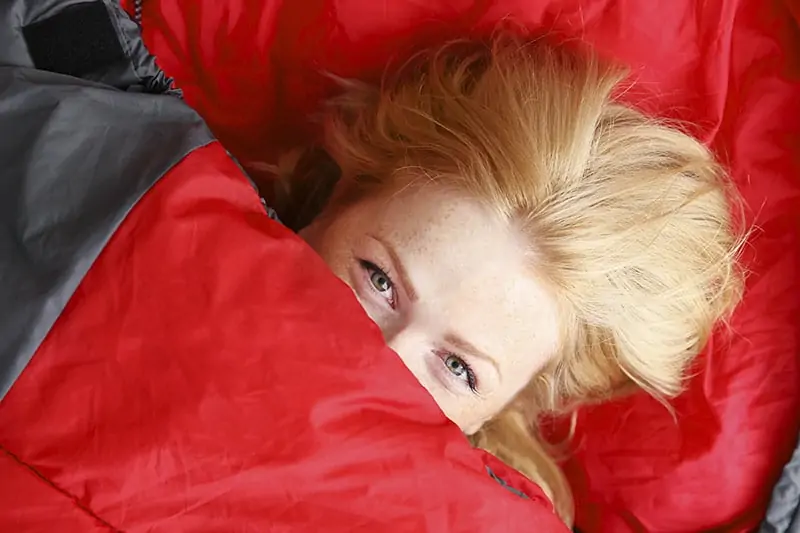The weather on Kilimanjaro can range from hot to extremely cold. As you climb higher and higher, you can expect nighttime temperatures to decrease by 12 degrees F (6.5 degrees C) for every 3,300 feet (1,000 meters). At higher camps, the nighttime temperature can be easily be below freezing. No one likes waking up shivering in the middle of the night, so you will need the right bag for getting a comfortable night’s sleep while in very cold conditions.
What are the Sleeping Bag Temperature Ratings?
A sleeping bag’s rating generally indicates the lowest temperature at which the bag will keep the average person warm. Sleeping bags are tested in the lab. These ratings, which are indicated by “EN”(European Norm) or “ISO” (International Standards Organization) numbers, are useful for comparing sleeping bags across different brands.
Because the “average woman” will feel colder in the same sleeping bag than the “average man”, the temperature rating for a particular bag will not be the same for women and men. Many manufacturers make gender-specific sleeping bags for men or women for this reason.
EN/ISO ratings include a comfort rating, a lower limit rating, and an extreme rating.
The comfort rating of a bag refers to the temperature at which the average woman should feel comfortable. The lower limit rating refers to the temperature at which an average man might feel comfortable. Finally, the extreme rating is the temperature that the average woman can survive in an emergency situation.
 Keep in mind that temperature ratings are based on an “average sleeper” so these ratings should be used as a guideline. Differences in individual body types and metabolism, sleeping pads, and clothing worn will all affect how a given sleeping bag will perform for you. Additionally, not all bags will report all of these ratings, though they typically will report at least one of them.
Keep in mind that temperature ratings are based on an “average sleeper” so these ratings should be used as a guideline. Differences in individual body types and metabolism, sleeping pads, and clothing worn will all affect how a given sleeping bag will perform for you. Additionally, not all bags will report all of these ratings, though they typically will report at least one of them.
Because temperature ratings are not tested in the real world, always err on the side of more warmth.
It is important to understand that most women’s sleeping bags will use the comfort rating in the product name while most men’s sleeping bags tend to report the lower limit rating. For example, Brand A’s Women’s Sleeping Bag 20F represents a 20F comfort rating. Meanwhile, Brand A’s Men’s Sleeping Bag 20F represents a 20F lower limit rating. So if you are a man who “sleeps cold”, you should get a warmer bag if you intend on sleeping at temperatures around 20F.
For climbing Kilimanjaro, we recommend selecting a bag that will keep you warm at or below the coldest conditions that are anticipated, which is a four-season sleeping bag with a comfort rating of 0F, or -18 C, or warmer.
What Sleeping Bag Shape is Best – Rectangular or Mummy?
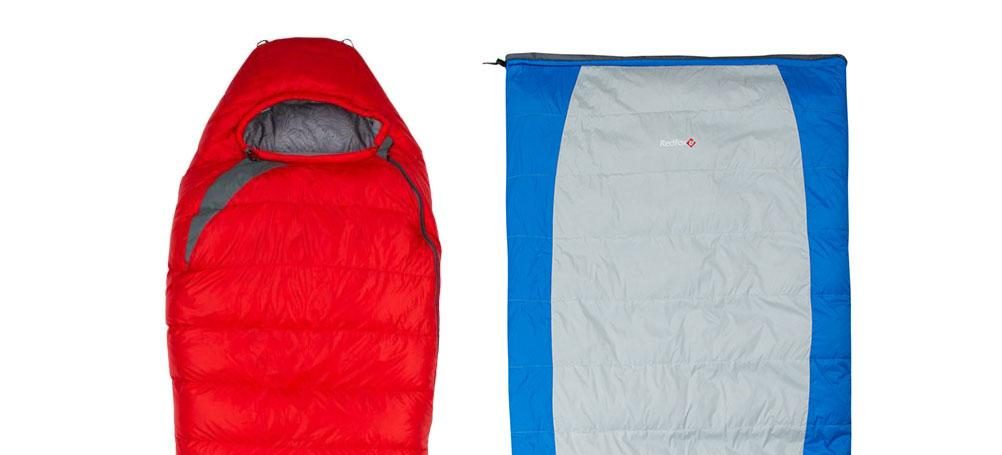 There are two basic shapes for sleeping bags. A rectangular bag is a classic shape that is non-tapered. Although it is more roomy and less restrictive, it is also less efficient due to the extra air space. So you’ll be able to move your legs and feet a bit more, but you won’t be as warm. Serious four season sleeping bags are never rectangular shaped, which are primarily used for warmer weather camping.
There are two basic shapes for sleeping bags. A rectangular bag is a classic shape that is non-tapered. Although it is more roomy and less restrictive, it is also less efficient due to the extra air space. So you’ll be able to move your legs and feet a bit more, but you won’t be as warm. Serious four season sleeping bags are never rectangular shaped, which are primarily used for warmer weather camping.
A mummy bag is contoured to the body and looks like an Egyptian sarcophagus. It has a tighter, snug fit to your body, which minimizes the air space between you and the wall of the bag. Mummy bags also come with a hood that you can pull over your head and cinch under your chin. Mummy bags are the warmest option and ideal for high altitude expeditions.
The dimensions of a mummy bag should fit your body size and shape, in length and width. It should not be too loose or too tight when zipped completely shut with the hood on. Sleeping in a fitted bag can take some getting used to. If you can get some overnight experience in a mummy bag before climbing Kilimanjaro, it may help you adapt while on the trail.
There are also hybrid shaped sleeping bags, known as semi rectangular or barrel shaped. This design is a compromise between space and warmth. If you absolutely cannot sleep well in a mummy bag, then consider a semi rectangular bag.
A feature to consider when choosing a sleeping bag is which side the zipper on — left, right, or center. Make sure it is easy for you to unzip when you’re snuggled in.
What is the Difference Between Down and Synthetic Sleeping Bags?
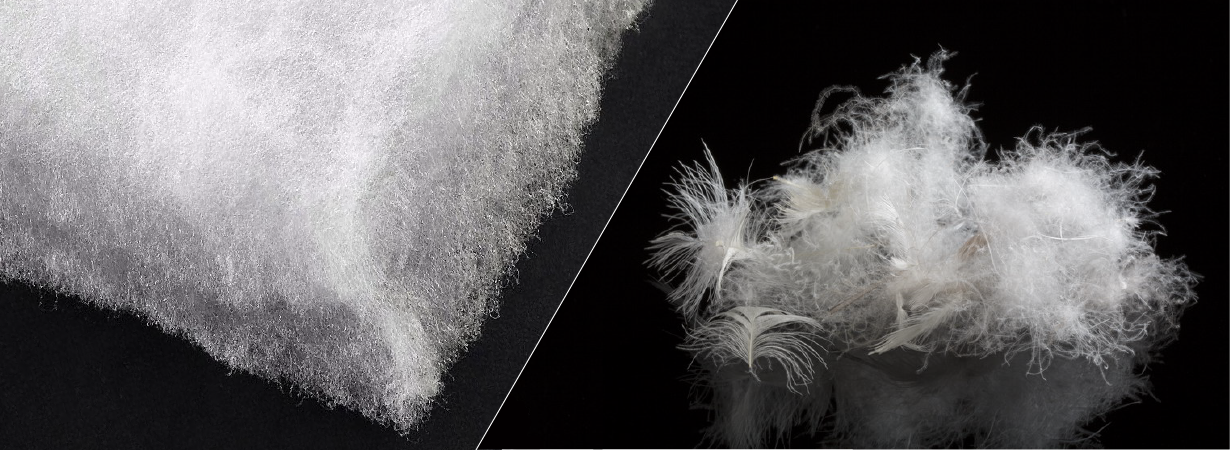 When choosing a sleeping bag you’ll also need to consider the insulation: down or synthetic.
When choosing a sleeping bag you’ll also need to consider the insulation: down or synthetic.
Down bags are lightweight and provide a superior warmth to weight ratio than synthetic bags. The main two drawbacks of down bags are that they are quite expensive and they lose their insulating properties when wet. Many companies now use a water repellent material with the down so they retain some warmth when damp. A good down sleeping bag’s insulation should be comprised of a high fill power (the loft of the down) and fill weight (total amount of down in a sleeping bag). Both are important. You can read more about fill power and fill weight here.
A synthetic bag is filled with polyester fibers that mimic the properties of down feathers. Generally, a synthetic bag weighs more than a down bag with the same temperature rating due to its lower warmth to weight ratio. However, it’s main advantage is that it will stay warm even if wet. Synthetic bags are not as compressible, but they tend to be less expensive than down.
Does Sleeping Bag Weight Matter?
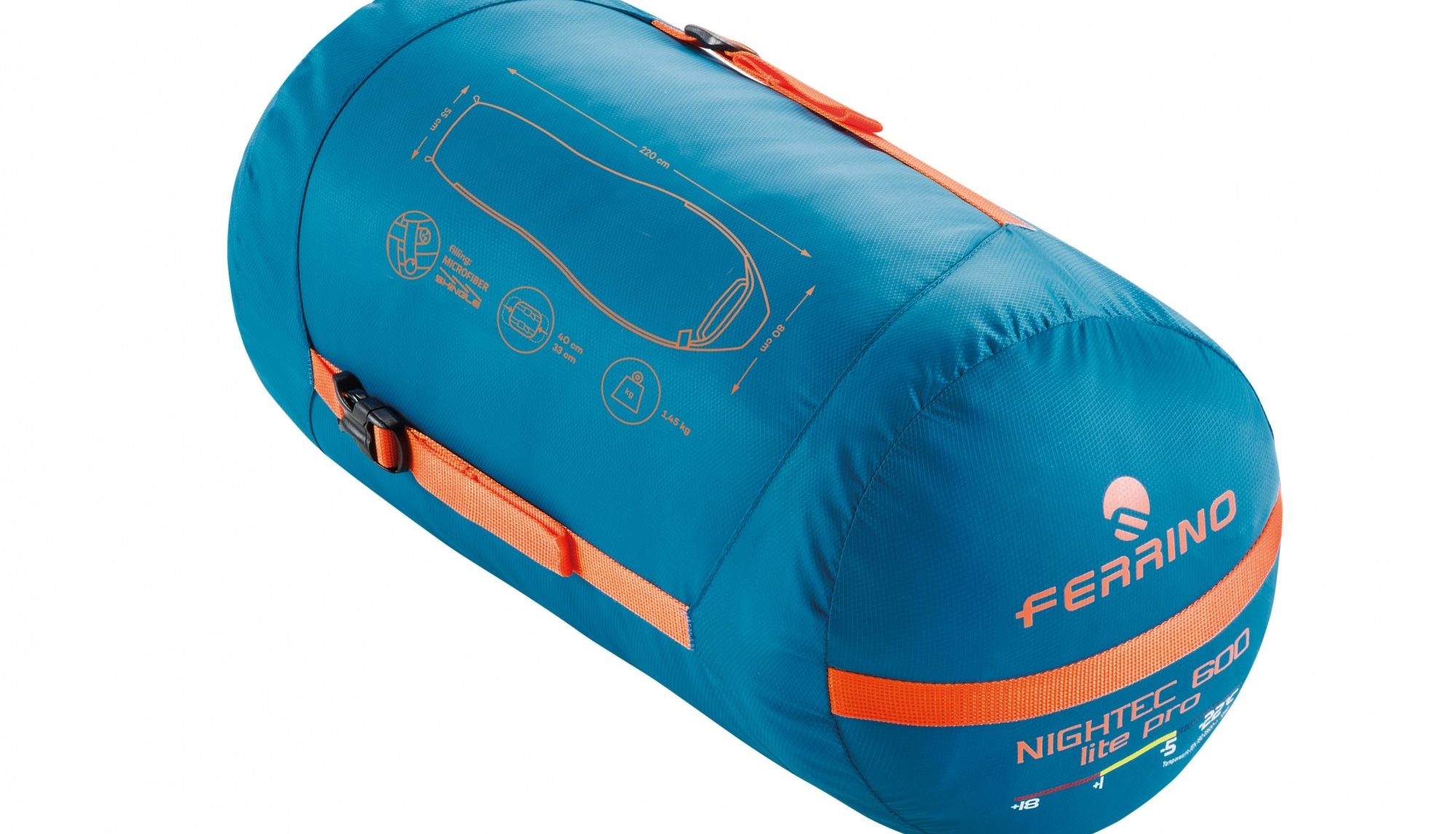 You’ll want to consider the weight of the bag, as it will be included in your duffel limit of 33 lbs. or 15 kg.
You’ll want to consider the weight of the bag, as it will be included in your duffel limit of 33 lbs. or 15 kg.
Normally a good zero degree bag weighs between 3.5 and 5.5 lbs. This weight variation is due to the materials used.
Do not go with a colder sleeping bag simply because it lighter. We strongly recommend that you use a sleeping bag with the comfort rating that you need, regardless of the weight. It’s far better to reduce the overall weight of your duffel by removing other gear if you are near the weight limit. An appropriate sleeping bag is one of the most crucial items on the gear list.
Sleeping Bag Recommendations for Climbing Kilimanjaro
If you are going to purchase a sleeping bag for the expedition, please do not skimp on a bag. We recommend down sleeping bags with low temperature ratings from name brand outdoor companies. Make sure to read the sleeping bag specifications and choose wisely based on a comfort rating that suits you.
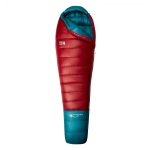 Mountain Hardwear Phantom 0F – Men’s
Mountain Hardwear Phantom 0F – Men’s
This mummy bag is comprised of lofty 850-fill-power down for optimal warmth-to-weight ratio and compressibility. It features a four-chamber hood design that maintains even loft around head for consistent warmth. Two-way, glow in the dark zippers allow for easy ventilation. The Phantom 0F has a durable water-repellent finish.
This sleeping bag weights 2 lbs 10.6 oz.
The North Face Inferno 0F/-18 C – Men’s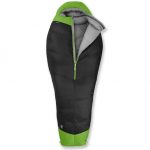
This bag is from the Summit Series, gear and equipment designed to keep one warm and dry in extreme environments such as Kilimanjaro. This bag is filled with 800- fill ProDown, has a hood and a contoured silhouette that allows you to wear additional layers in the bag. Of note, this bag has a center zipper that goes mid-way down.
This bag comes in regular and long sizes.
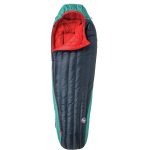 Big Agnes Daisy Mae 0F – Women’s
Big Agnes Daisy Mae 0F – Women’s
This is a lightweight women’s bag with 650-fill-power DownTek, which is a water repellent down material. This is a semi rectangular bag with a built in sleeping pad retainer and pillow pocket. Its contoured silhouette helps reduce cold spots.
The Big Agnes Daisy Mae 0F comes in regular and petite sizes.
Big Agnes Star Fire UL 0F – Men’s
This technical, ultralight bag has 850-fill-power Down Tek and is a highly compressible bag. The traditional mummy-shape and hood provides increased thermal value. This bag comes in small, regular, and long sizes, thereby fitting individuals ranging from 5’5” to 6’6”.
The comfort rating of the Star Fire UL 0F is -10 C and the lower limit is -17 C.
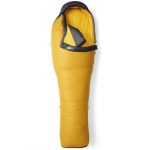 Marmot Wind River -10F – Men’s
Marmot Wind River -10F – Men’s
This lightweight down bag is filed with 650-fill-power down and Marmot’s Down Defender which provides protection and improved performance in damp conditions. This is a mummy style bag with a hood. This bag is EN tested and has a comfort rating of -17.1 degrees C.
This bag comes in regular and long sizes.
Sleeping Bag Rental From Peak Planet
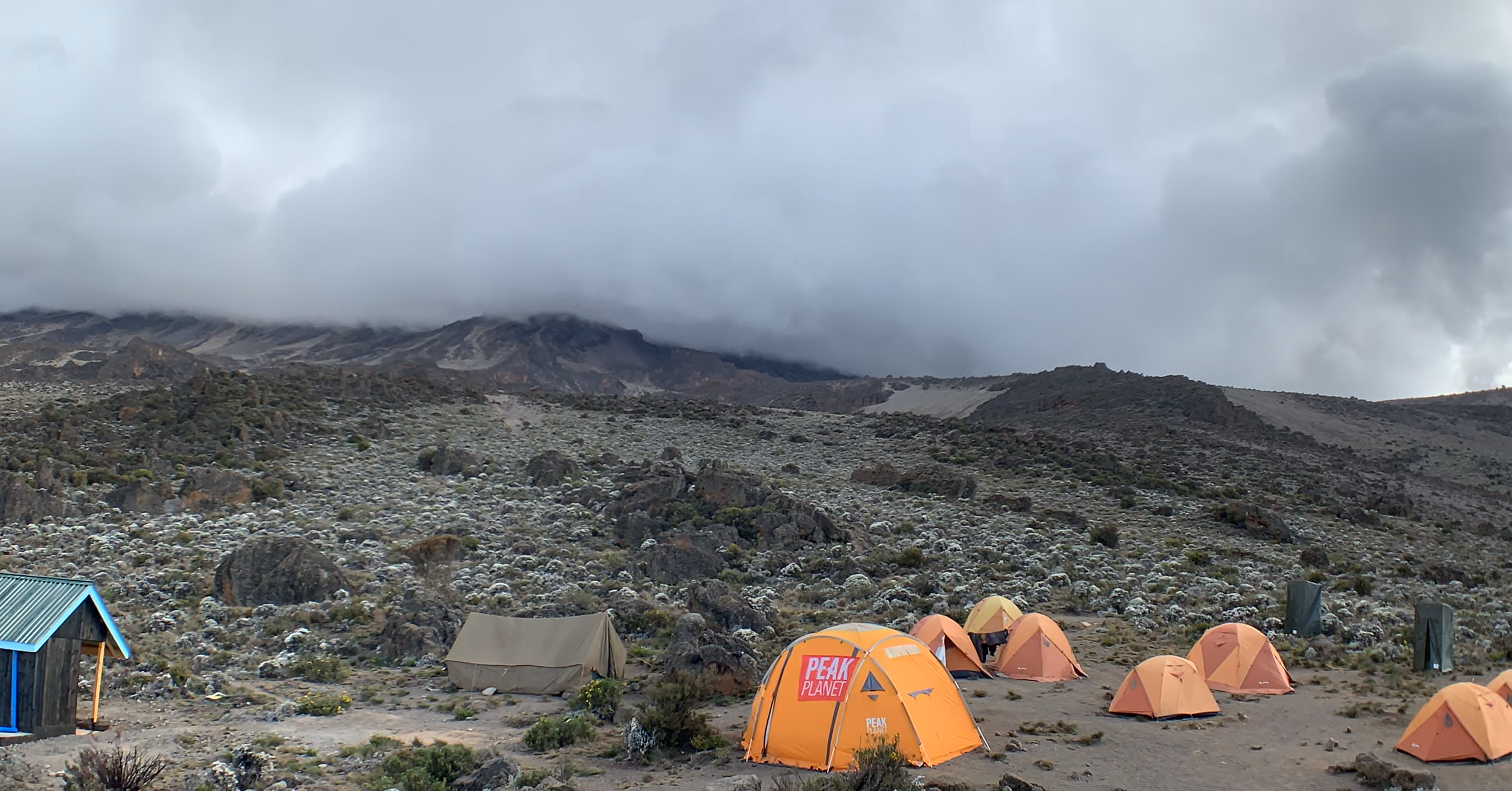 If you don’t regularly camp in cold climates, you may want to rent a sleeping bag from us rather than purchasing one. This takes the guesswork out as you will be assured to have a bag designed for the conditions on Kilimanjaro. We use the Ferrino Nighttec 800 sleeping bag. It is comfort rated to 0° F or -15° C and weighs 4.73 lbs.
If you don’t regularly camp in cold climates, you may want to rent a sleeping bag from us rather than purchasing one. This takes the guesswork out as you will be assured to have a bag designed for the conditions on Kilimanjaro. We use the Ferrino Nighttec 800 sleeping bag. It is comfort rated to 0° F or -15° C and weighs 4.73 lbs.
You may want to bring a sleeping bag liner for some added warmth for cleanliness.
One final tip, when you arrive at the campsite at the end of the day’s hike, go into your tent and set up your sleeping arrangements. Take the sleeping bag out of its compression sack and lay it on top of your sleeping pad. This will allow time for the bag to fluff up, which will release any moisture and also trap the air between the fibers to keep you warm. Also be sure to keep your sleeping bag away from the sides of the tent, as you don’t want any condensation build-up to dampen your bag.


